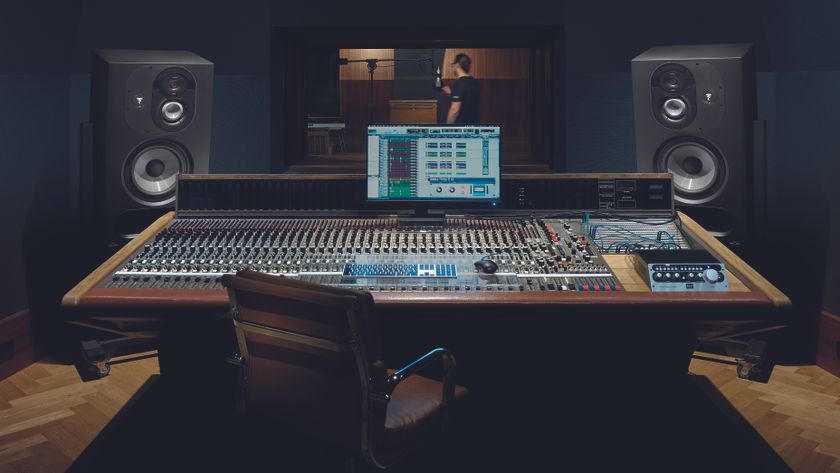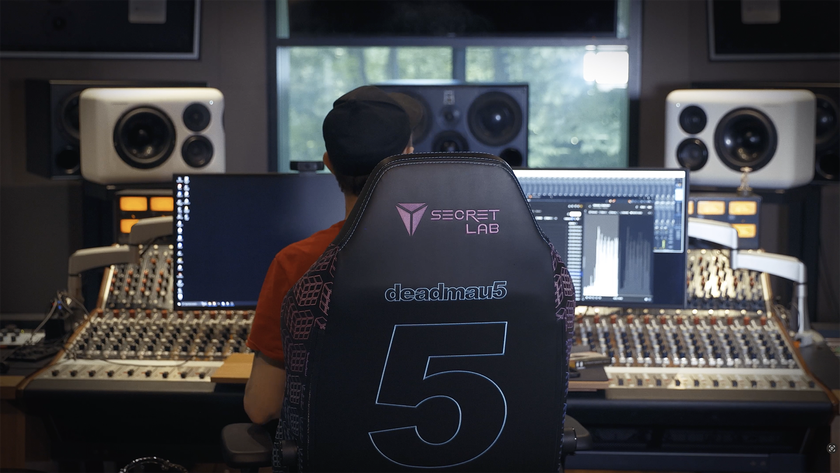Best in-ear monitors
From the rehearsal room to the stage, these are the best in-ear monitors for musicians
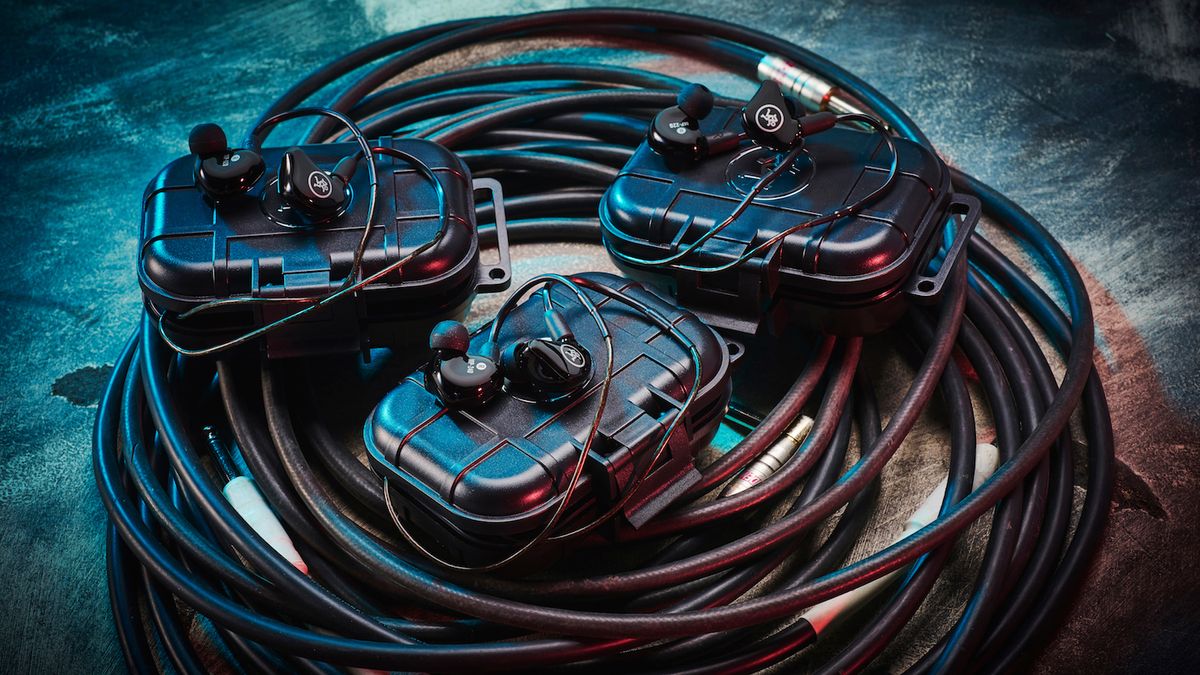
Deciding you want to incorporate in-ear monitors (IEMs) into your setup is usually a confident step for an artist or band that has reached a certain stage in its performing life. It's a move that says you're taking things seriously, and that you want to ensure the fans are hearing the music in the way you intended it. If that sounds familiar, you need to read this guide to the best in-ear monitors.
People usually choose to go down the route of IEMs for two main reasons: to receive a clean, unaffected version of their sound direct to their ears, and to protect them from the high volumes associated with live performance. On-stage wedges and side-fills are all well and good, but for the ultimate in on-stage control and aural accuracy, you simply can't beat a good set of IEMs. Here's a look at some of the best systems around today, for every budget and application.
What are the best in-ear monitors?
MusicRadar's got your back
With such a disparity in price between entry-level and high-end, you'll know for yourself where your choices are likely to lie. That aside, there are a couple of models we'd recommend for reasons not relating to cost. The Audio Technica ATH-E70, for example, are a superb set of in-ear monitors for anyone looking to improve on the default sets many wireless kits ship with. Swap them out for a set of the ATH-E70s and you'll notice a considerable improvement in your rig.
We're also heavily enamoured with the Shure SE846. Ignoring the bland outward appearance, these are the only set we tested that made music we thought we knew inside out reveal new secrets to us. The sound quality was out of the world; invest in a pair of these and you might never need another set of earphones again.
The best in-ear monitors: buying advice
A good place to start when choosing the best in-ear monitors for you is deciding if you want to go wired or wireless with your IEMs. Your answer here will likely depend on what instrument you play. For drummers, in their (usually) static positions, it can make sense to have that pure, wired sound as this provides no risk of audio dropout or interference.
Singers, guitarists, keyboard players and, in fact, anyone else front of stage however would benefit from choosing a wireless solution. These comprise a transmitter device, into which you plug the output from the mix desk, and a receiver pack which takes a radio signal from the transmitter and feeds it into the headphones. It's possible from here to decide if you want a full-band mix in your monitors, or selected parts of it.
A side benefit of using IEMs is the simple fact that you don't have to play as loudly on stage; often, particularly with drummers, musicians find themselves inadvertently competing with each other simply so they can hear themselves. With IEMs, this isn't an issue, meaning you can employ a much defter touch into your playing without fear of those nuances being drowned out. Singers will also benefit by being able to much more precisely hear the notes they're hitting (or otherwise)...
At the top end of the price range, you'll find the headphone element of the system with all kinds of interesting tech involved. As with any headphones, the drivers are the parts that convert the electrical signal into something you can hear. Budget options may feature one or two drivers, but at the pro-level you'll find monitors with up to eight drivers. This offers benefits like extended frequency brackets or wider dynamic ranges, but you'll pay for the privilege.
You may also see custom foam earbuds, taken from a mould made of the individual's own ear canal. This has superior noise-blocking properties, but ears can change over time so you may find this isn't a life-long solution. Some musicians have also spoken of feeling a tad left out of the fun – if the noise-blocking stops you hearing the applause, what's the point, after all?
There’s something for everyone here, with prices and styles to suit all budgets and needs.
These are the best in-ear monitors right now
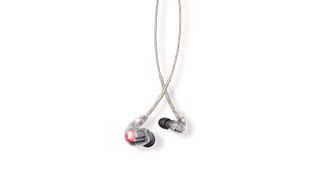
Shure SE846
Specifications
Reasons to buy
The problem that comes with reviewing in-ear monitors is that so many of them look the same. All across the price spectrum, you'll find generic 'clear plastic housing with various electrical gubbins' type arrangements. But, as we found out when we tested the Shure SE846, not all IEMs are created equal.
Basically, these blew us away. In terms of sound reproduction, you can see why the audiophile crowd gravitate towards them. A neat touch is the inclusion of a set of three 'nozzles', which can be interchanged to tailor the listening experience. But, importantly, they also offer up to 37dB of sound attenuation making them ideal for noisy stages and studios. You could conceivably not notice the apocalypse if you had these on and, with sound this good, the apocalypse can wait quite frankly.
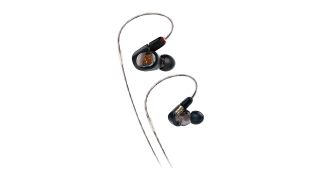
Audio Technica ATH-E70
Specifications
Reasons to buy
If you've spent out on a decent wireless system but found the included earphones are somewhat lacking, then don't fret; they are the easiest part to replace. And, as a step up, you'll want to look for something which improves the overall sound and ambient noise isolation.
The Audio Technica ATH-E70 are just the ticket when it comes to choosing the best in-ear monitors for middling budgets. Sitting pretty in the midrange, these earphones feature three drivers that provide a balanced, accurate soundstage. As a step up from the entry-level, there is an increase in the cost but if you've used basic 'phones for a while you'll certainly notice a difference in performance.
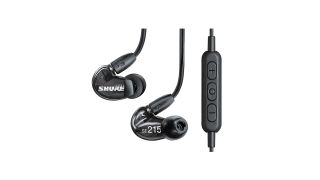
Shure SE215
Specifications
Reasons to buy
Shure is known as a real heavyweight in the world of sound recording and production, so we were expecting great things from the Shure SE215 in-ear monitors. Thankfully, for the most part, they delivered.
Shure claims the SE215s block out around 90 percent of ambient noise, which makes them ideal for most musical applications. The thickened detachable cable also indicates a degree of ruggedness to them, although we did pick up some slight magnetic interference when they came into contact with our hands.
They're not high end - only one driver is employed here - however as an entry to the world of IEMs they're very respectable. And, as a bonus, they are phenomenal when just used to listen to Spotify or the like. Overkill? Not at all...
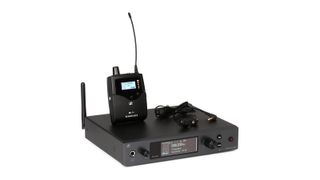
Sennheiser EW IEM G4 Twin
Specifications
Reasons to buy
Working musicians need to look a little higher up the chain when it comes to choosing the best wireless in-ear monitoring system for them. When your livelihood depends on providing a quality performance, night after night, then you need to be sure the gear you're using can cope.
The Sennheiser EW IEM G4 system offers that assurance. As one of the biggest names in audio transmission, Sennheiser can be trusted when it comes to its monitoring line-up. The G4 system is reliable, high quality and offers useful features like a 330 feet transmission range and easy synchronisation between transmitter and receiver via infrared.
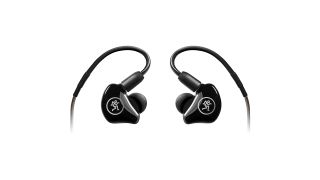
Mackie MP-220
Specifications
Reasons to buy
When choosing a set of in-ear monitors, the number of drivers is a significant metric to consider. Budget models tend to offer only one, leaving the burden of reproducing every bass, mid and treble frequency to one single driver. Explore a bit higher up the range and you'll see why separating these out is important.
The Mackie MP-220 is a great example. By employing two drivers - one for highs, one for lows - the sound quality is improved immensely. A snug fit from the earbud provides good isolation too, making these an ideal first 'proper' set of IEMs for any budding performer.
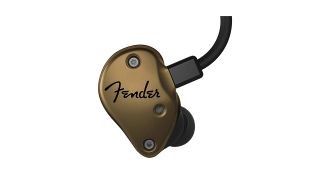
Fender FXA7
Specifications
Reasons to buy
While any of the monitors we're listing today will suit a live performance role, not all of them translate as well to other uses. Put simply, good monitors are often good because they don't flatter the sound. Indeed, their flat frequency means they are used to critically evaluate a sound, not dress it up for your listening pleasure.
There is a middle ground though, and it is here that the Fender FXA7 monitors sit. They're perfectly suited to on-stage use on account of their 22dB of noise reduction, yet their 16-ohm impedance means they can also do a solid job of reproducing tunes from your mp3 player or smartphone.
Get the MusicRadar Newsletter
Want all the hottest music and gear news, reviews, deals, features and more, direct to your inbox? Sign up here.
Chris Corfield is a journalist with over 12 years of experience writing for some of the music world's biggest brands including Orange Amplification, MusicRadar, Guitar World, Total Guitar and Dawsons Music. Chris loves getting nerdy about everything from guitar and bass gear, to synths, microphones, DJ gear and music production hardware.
Most Popular









